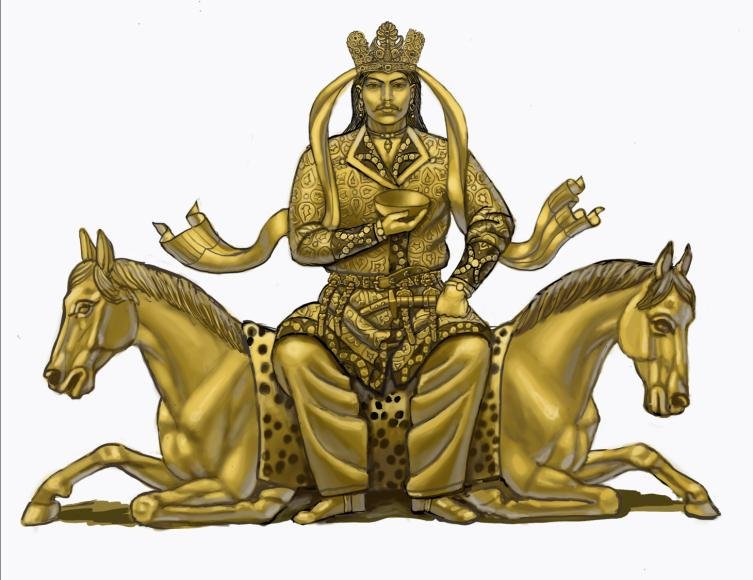Researchers have unveiled the existence of a Turkic Khaganate cult complex dating back to the Western Göktürk period (6th to 8th century CE) in the Tarbagatay district of Kazakhstans Eastern Kazakhstan region. The site, located in the Eleke Sazy...
Researchers have unveiled the existence of a Turkic Khaganate cult complex dating back to the Western Göktürk period (6th to 8th century CE) in the Tarbagatay district of Kazakhstans Eastern Kazakhstan region.
 Credit: TRT HABER
Credit: TRT HABER
The site, located in the Eleke Sazy Khagan social complex in the Kurgan area, is the first and only memorial cult complex of the Turkic Khaganate discovered outside of Mongolia.
Professor Dr. Zainolla Samashev, the lead archaeologist, said: Of course, this center was a complex built in memory of one of the Western Gokturk Khagans. Later, a large mausoleum was built here. This complex is of great importance for the Turkish world in terms of its architectural style, burial ceremonies, findings, and religious belief cult.
The excavations, conducted between 2016 and 2018, unveiled more than 300 kurgans spanning from the 9th century BCE to the 7th century CE. Notably, personal belongings of a Tegin, an ancient Turkish title meaning prince, were discovered in the Kurgan area.
 Credit: TRT HABER
Credit: TRT HABER
The newfound artifacts include a golden belt buckle featuring a depiction of a Göktürk Khagan sitting on his throne, holding a crown and an oath goblet. Professor Samashev highlighted the literary legacy of this ornamentation, linking it to Turkic peoples.
The buckles imagery, with lotus flowers reminiscent of Buddhist art, and the Khagan sitting cross-legged with a crown resembling a three-cornered halo, suggest a cultural and religious heritage. Dr. Serhan Ç?nar noted, The images in the buckle ornament also clearly show the throne on which the Khagan is seated and the bridesmaids serving him.
This discovery marks the first-ever depiction of a Khagan face on an object. The intricate details on the buckle portray the Khagan on two horses, flanked by servants holding ceremonial bowls.
Professor Samashev clarified the historical context, stating, After the United Göktürk Khaganate was divided into two, the state called the Great Turkic Khaganate was established in the area of Western Turkestan. He highlighted the political unification that included both steppe tribes and settled communities in the Sogdian and Khwarezm regions.
 Credit: TRT HABER
Credit: TRT HABER
He suggested two possibilities: the owner of the buckle was either one of the Khagans at the end of the 8th century or a Tudun affiliated with the Khagan of Ötüken or Suyab, who gifted it to the rulers son as a sign of dominance.
 Credit: TRT HABER
Credit: TRT HABER
Furthermore, the complex includes a large mausoleum, a temple, a ceremonial pathway, dozens of small and medium-sized kurgans, and additional structures in the eastern zone. A granite statue depicting a Göktürk Khagan or Yabgu sitting cross-legged was also uncovered, adding to the significance of the findings. The statue has been placed under protection at the National Museum in Astana.
The post Archaeologists unearth Turkic Khaganate cult complex and artifacts in Kazakhstan appeared first on Archaeology News Online Magazine.















